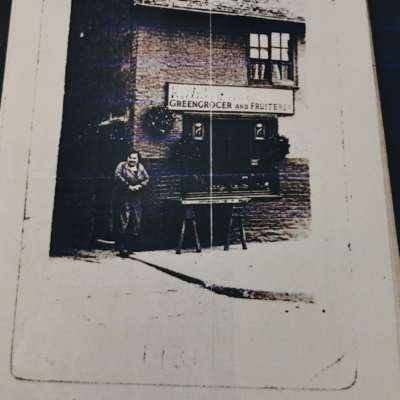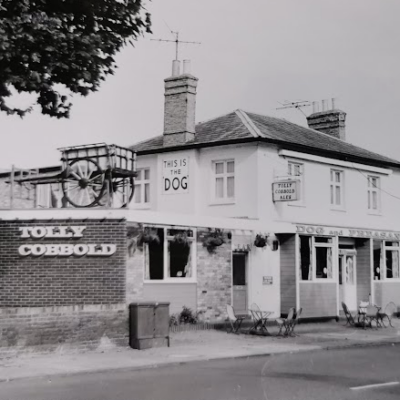Search by topic
- archaeology
- architecture
- bricklayer
- Building of Local Interest
- carpenter
- church
- crime
- dressmaker
- fire
- general labourer
- Great Eastern Railway
- listed building
- medieval
- oral history
- Public House
- Rattee & Kett
- Roman
- scholar
- school
- Then and Now
- tudor
- women
- work
- world war one
- world war two
Search by text
 Gas Works site 1901
Gas Works site 1901Gasometer, Gas Works, Newmarket Road
History of the Gas Works
The Great Gas Controversy
Enid Porter ‘Victorian Cambridge’ using the diary of Josiah Chater writes at length about the protracted battle between two rival gas companies to supply the city of Cambridge. On 1st June 1868 Josiah made his first reference to the issue: This evening our new Gas Company lighted up the town with paraffin lamps – the Old Company also lighted up, and we looked very brilliant.
In November 1867 the Cambridge Improvement Commissioners had advertised for new tenders for lighting the streets and for the private supply of gas because their contract with the Cambridge University and Town Gas Lighting Company was due to expire on 1st June 1868. The Gas Company’s prices were considered too high, so new tenders were taken from the University and Town Gas company and a new company, the Cambridge Consumers’ Gas Company.
A new contract was awarded to the Cambridge Consumers’ Gas Company; the other company started legal proceedings. On 15th April 1868 the new company had its first AGM and two days later the foundation stone of the first gas holder at a site near Coldham’s Common was laid. It was soon obvious that the deadline of 1st June to provide lighting would not be met and the company were granted an extension of a month which allowed them to use paraffin lamps instead. However, the extension was revoked and the contract declared void after only one day of the extension. In the meantime, representatives of the former company, The Cambridge University and Town Gas Lighting, had gone round and smashed about 100 of the new lamps!
The Consumers’ Company still intended to lay gas pipes in the streets so the University and Town Co. applied for an injunction to stop this. In the end the University and Town Co. renewed their contract with the city.
1870
Josiah Chater records in his diary on 6th February taking his children, Milly, Junia and Ernest ‘to see the gas house; the girls were frightened, but Ernest was very interested. We saw the result of the accident to the great gasometer.’
The accident had happened on 13th December 1869. The large gas holder, erected in 1867, overturned in a gale, and the 300,000 cubic feet of gas which it contained escaped and accidentally became ignited. There were no casualties.
It was recorded in the Cambridge Chronicle 18/12/1869:
DISASTROUS OCCURRENCE AT THE GAS WORKS. On Monday evening last, little before six o’clock, the town was startled by sudden blaze of light illuminating the sky in the most vivid manner. It arose from the circumstance that the large new gas-holder, 118 feet in diameter and 30 feet high, when at its highest elevation, was blown over. The gas escaping in vast stream from the bottom soon came in contact with one of the lights on the premises, and was instantly ignited. As the holder thus rapidly vomited forth its condensed and inflammable contents, it lurched over with its enourmous weight—some hundred tons of wrought iron—against the columns and the flanges of the iron guides, gradually snapping and tearing all before it. The huge cylindrical cup of tough wrought metal has been bent bv its own weight like paper, and has assumed a form somewhat symmetrical indeed, but whose surface it might puzzle mathematician to express by algebraical equation. The Mayor, who is one of the Directors of the Gas Company, was on the spot, and with several members of the University and inhabitants of the Town assisted the officers and servants of the Company to keep the fire from the sheds and other buildings. They were perhaps not aware that they were really in a position of some danger, for, in cases of this kind, it sometimes happens that before all the gas that can get out has actually issued, sufficient quantity of atmospheric air will have entered to form with the residue a frightfully explosive compound. If such a compound was formed in this case, and it is almost impossible that it should not have been formed, it fortunately remained in the upper recess or cavern of the overthrown holder retained in equilibrium by the outward pressure, and no explosion took place. The flow of gas ceased, and the conflagration was an end in the course of thirty to forty minutes. Accidents of this kind, though happily rare, are by no means unknown. A few years ago the large new telescopic gasholder the Hague Gas Works was blown over and utterly destroyed. A similar catastrophe took place three or four years ago Yarmouth, and quite recently accidents of the same nature have occurred Richmond, at Wandsworth, at Sydenham, and other places. These cases seem to us to be, at any rate, sufficiently common to justify the claim of gas companies to a considerable allowance on the score of risk and casualties in estimating the net rateable value of Gas works. We are assured that the Directors are determined to avail themselves of every resource, however costly, to prevent the inhabitants from suffering any inconvenience, and that they confidently hope the supply will be fully maintained without interruption.
A memorial to employees who died in WWI was unveiled in 1921.

When it was built in 1927 it was the largest gas holder in East Anglia photo 1928 (Cambridgeshire Collection)
Further history:
Contribute
Do you have any information about the people or places in this article? If so, then please let us know using the Contact page or by emailing capturingcambridge@
License
 This work is licensed under a Creative Commons Attribution-NonCommercial-ShareAlike 4.0 International License.
This work is licensed under a Creative Commons Attribution-NonCommercial-ShareAlike 4.0 International License.











